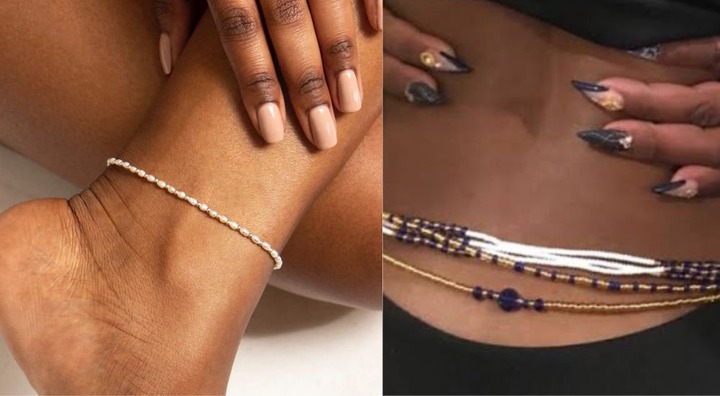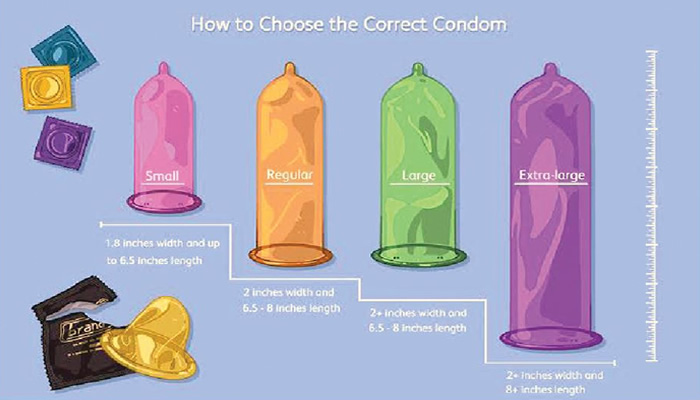
Waist beads and anklets are traditional adornments that have evolved into fashion statements in various cultures.
Perception of Waist Beads and Anklets
The perception of waist beads and anklets varies widely from one culture to another. In some cultures, they are seen as symbols of femininity, fertility, and sensuality. In other cultures, they are worn for traditional or religious reasons.
However, there are also some negative stereotypes associated with waist beads and anklets. For example, some people associate them with promiscuity or witchcraft.
Perspectives from Nigerian Women
THE WHISTLER interviewed six Nigerian women residing in different places to gauge their perceptions of waist beads and anklets in modern times.
Elizabeth Ogbonna, 31, sees waist beads and anklets as a form of fashion that transcends different cultural spheres.
The Lagos resident wears them because she appreciates the artistic aspect of fashion. She does not believe that wearing waist beads or anklets affects her body confidence or self-expression.
“I wear it, and what influenced my decision is just my love for arts as fashion. I love the feel on my waist, and at my lone time, I play with it when I ponder issues. Wearing a waist bead has not in any way affected my body confidence or expression because I don’t feel inferior in it.
“Waist beads and anklets are people’s way of life, most especially in the olden days in the Igbo clan. Other ethnic groups and cultures even go extreme in wearing neck-rings and all, so I feel it’s part of our culture and tradition and I will always promote it.
“Society perceives those with waist beads and anklets as being wayward and fetish. I won’t also deny the fact that most ladies tend to go the extra mile in using waist beads or anklets to get men’s attention (Olosho Plus).
“Waist beads and anklets have evolved from being the normal beads our mothers wore to more fascinating ones like the corals and the likes, and due to what we call civilization, people’s perception has derailed in accepting the fact that it’s our culture. Different religious bodies now preach against it and the majority still accept the fact that it’s evil and devilish but forgetting that even those that introduced religion still hold their culture high.
“In the Igbo race, red beads are mostly used. You see titled men and women with red beads on their necks and wrists. Then, it’s a way of recognizing a titled man (chiefs, ozo, etc) but our Gen Z baddies have turned all into fashion. It’s so sad how the value of our culture is gradually fading away all in the name of civilization.”
32-year-old Tamunokeibi Bristol, who works with the Lekki Free port Terminal, Lagos, acknowledged that waist beads and anklets are seen as fashionable.
While she hasn’t worn them herself, she recognizes their potential to enhance one’s fashion and style. She noted that people have different perceptions, with some associating them with tradition and others with fashion.
“People have different perceptions about waist beads. Some think they’re connected to diabolism, fashion, and beauty. I think people associate the accessory with what experiences they have through association and stories over the years.”
A Nigerian residing in the UK who simply gave her name as Mrs. Ajala said she wears waist beads for aesthetic and weight control purposes.
The 33-year-old said, “In most cultures, waist beads are used for ceremonies, cultural day celebrations, and adornments. It has helped me control my weight. Anytime it felt tight, I knew I needed to control my weight.”
She added, “Waist beads are cultural, a woman using waist beads is seen as beautiful by some traditional men, and anklets too, especially ones made from traditional beads, but a lot of people view girls that wear waist beads and anklets as ‘loose girls’ whereas, in olden days, these were used by women to adorn themselves and show their feminism to the male counterparts. Waist beads and anklets, for me, serve both fashion and cultural purposes.
For Cynthia, 32-year-old owner of a mini supermarket, ‘We Have It Store’, waist beads can boost body confidence and self-esteem by making individuals more aware of their bodies.
According to her, waist beads can communicate social status in various African cultures but noted that some misconceptions associate waist beads with promiscuity.
Ifeoma Eze, a 35-year-old fashion designer residing in Abuja, wears both waist beads and anklets for cultural and traditional reasons despite different stereotypes associated with those who wear them. To her, these accessories hold cultural significance and serve as identifiers.
“For me, it reminds me of our Igbo tradition. It keeps me in my feminine state, it has nothing to do with my self-confidence because they’re mostly covered with the outfit one is putting on, unlike what we had back then, where maidens flaunt them.
“We have different types worn by different categories or classes of people. There are the white ones worn by river goddesses. You won’t find such everywhere. There’s another type mainly for royals. So, it’s more like an identifier. For me, I use bright mixed colors because of its beauty.
Victoria John, a 30-year-old resident of Abuja, shared insights from her upbringing in a culture that views waist beads as both body ornaments and protective accessories.
Despite not having worn them herself, she acknowledges their potential to enhance self-expression and boost confidence.
She strongly opposes the stereotype that associates waist beads with promiscuity.
In her words, “Growing up in Benue state, I’ve observed that waist beads are not only considered body adornments but also serve as protective elements, even for babies.
“I’ve never worn waist beads because they don’t appeal to me. However, just as makeup can enhance self-expression and confidence, I believe waist beads can offer a similar sense of empowerment to those who wear them.”
“Both waist beads and anklets were cultural traditions before they evolved into fashion. They have evolved because the percentage of people who wear them has increased.”











Leave a Comment